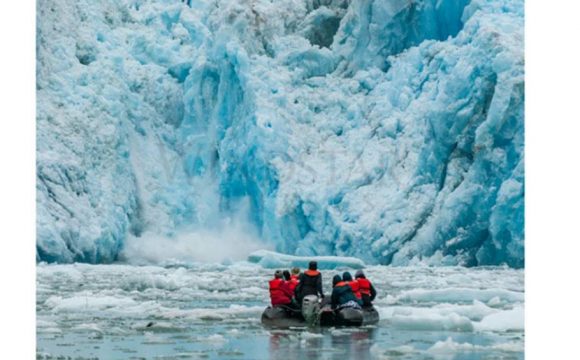Located on Canada’s east coast and about the size of Scotland, Nova Scotia is very much a road trip destination, with spectacular seaside and inland driving routes. Rich in history the province is also home to six UNESCO designated sites, many so close together that you can explore them all within a few days:
Old Town Lunenburg: one of only two urban communities in North America designated as a UNESCO World Heritage site. Considered to be the best surviving planned British colonial town in North America, you can still see the tall ships moored off the port and hear the smith’s hammer, while guided tours tell tales of lives lost on the ocean, and the spirits that return to haunt the living. Lunenburg’s harbour-side streets are lined with unique shops and award-winning restaurants that blend with the well-preserved and colourfully painted historic homes, much of it like a living museum from the 18th century.
Landscape of Grand Pré: The 13 square-kilometre UNESCO world heritage site is located on the Bay of Fundy’s Minas Basin in Nova Scotia’s Annapolis Valley. The dykelands, fields, and settlement on the hills, first established by the Acadians in the 1680s, have been maintained and expanded over centuries by farmers of New England Planter descent, and later immigrants – including English and Scottish who came in the 19th and 20th centuries and Dutch who arrived after the Second World War.
Joggins Fossil Cliffs: At Joggins you will be able to observe and traverse up to 15 kilometres of magnificently exposed layers of rock revealing the world’s most complete fossil record of life in the “Coal Age” when lush forests covered Joggins and much of the world’s tropics, 300 million years ago. Constant erosion from the Fundy tides, rising and falling up to 13 metres (42 feet) in Joggins twice daily, creates possibilities for exposing new fossils. With careful observation, visitors may find fossils on the beach that have fallen from the cliffs, or view the spectacular sandstone layers that entomb ancestors of the first dinosaurs. It is all here, at the Joggins Fossil Cliffs UNESCO World Heritage Site, waiting to be discovered.
Cliffs of Fundy UNESCO Global Geopark: A UNESCO Global Geopark desgination celebrates globally significant connections between geology, local communities, culture and nature. The Cliffs of Fundy UNESCO Global Geppark tells the story of the supercontinent Pangea 300 million years ago and its ripping apart 100 million years later. Explore coastline shaped by the Bay of Fundy’s highest tides in the world to discover the oldest dinosaur fossils in Canada and fascinating Mi’kmaq legends in this magnificent geological landscape.
Bras d’Or Lake: Surrounded by rolling hills and dotted with islands, this UNESCO Biosphere Reserve is located in the heart of Cape Breton Island offering a unique blend of both fresh and salt water and a great location to view everything from the majestic bald eagle to curious grey seals. The diversity of the area doesn’t stop at the waters’ edge. The extensive watershed is home to Mi’kmaw First Nations and descendants from early French, Scottish, and English settlers. The people of the Biosphere maintain close ties to the culture of their ancestors.
Southwest Nova Biosphere: Only 18 ecosystems in Canada have been specially designated as a UNESCO Biosphere Reserve — and one of them can be found in the Yarmouth & Acadian Shores region of Nova Scotia. Featuring the largest protected wilderness area in the Maritimes, the UNESCO Southwest Nova Biosphere Reserve seeks to achieve a balance between the conservation of our natural and cultural heritage, and economic activity through sustainable resource development that supports prosperous local economies and healthy communities. At the UNESCO Southwest Nova Biosphere Interpretive Centre, in the historic Killam Brothers Shipping Office building, visitors are invited to learn about the culture, heritage and biodiversity of the five southwestern counties in Nova Scotia.
















